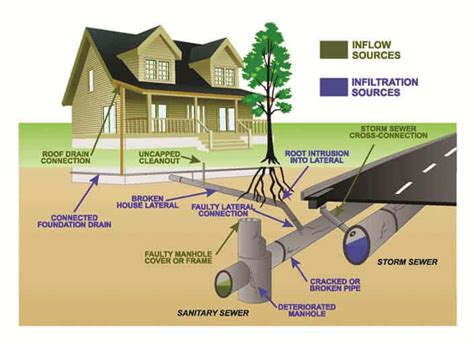How Deep is Deep Enough? Your Water Line Guide
Determining the correct water line depth for your specific needs is crucial for a variety of reasons, from ensuring efficient irrigation to preventing waterlogging and maximizing aesthetic appeal. This guide will delve into the factors influencing ideal water line depth, helping you make informed decisions for your landscape, pool, or other water-related projects.
What Factors Determine the Ideal Water Line Depth?
Several key factors influence the appropriate depth for your water line:
-
Type of Piping: Different materials, such as PVC, polyethylene, or copper, have varying degrees of flexibility and resistance to damage. Thicker-walled pipes can withstand greater pressure and are suitable for deeper installations. Thinner pipes may be suitable for shallower installations.
-
Climate: In areas with frequent freeze-thaw cycles, a deeper water line is usually necessary to prevent pipe damage from freezing water. Soil type also plays a role – well-drained soil may allow for shallower installations.
-
Soil Conditions: Rocky or compacted soil may require more shallow installation to avoid costly excavation. Conversely, loose, sandy soil may allow for deeper burial with less risk of damage. Consider the presence of underground utilities – marking lines and consulting utility companies before digging is crucial for safety and avoiding costly repairs.
-
Water Pressure: Higher water pressure necessitates more robust piping and may influence depth choices to mitigate risks. Low pressure systems may allow for more flexibility in depth.
-
Irrigation System: For sprinkler systems, the depth needs to allow for easy access to the pipes for maintenance and repairs. For in-ground pools, depth is dictated by factors like frost line and structural integrity.
-
Intended Use: A water line for a swimming pool will have significantly different depth requirements than a water line for a simple drip irrigation system. The purpose dictates the engineering considerations.
How Deep Should My Irrigation Water Lines Be?
For most residential irrigation systems, burying the main water lines at a depth of 18-24 inches is generally recommended. This depth offers adequate protection from freeze damage in many climates, and provides a buffer against accidental damage from landscaping activities. Lateral lines (smaller lines branching off the main lines) can often be shallower, around 12-18 inches. Always check local building codes for specific requirements.
What if I live in a colder climate?
In regions with harsh winters and prolonged periods of freezing temperatures, increasing the depth of your water lines is crucial. It’s recommended to consult with a local irrigation specialist to determine the appropriate depth based on your specific climate and soil conditions. They can help you determine the frost line in your area, which represents the maximum depth the ground freezes. The water line should be installed below the frost line.
How Deep Should My Swimming Pool Water Lines Be?
Pool water lines are subject to different considerations. Depth depends on several factors, including the pool's structural design, local building codes, and the presence of a frost line. Consult with a qualified pool contractor to determine the appropriate depth for your specific project. They will assess local regulations and site conditions to ensure the lines are adequately protected.
What are the consequences of installing water lines too shallow?
Installing water lines too shallowly can lead to several problems:
-
Freezing: In colder climates, shallow water lines are vulnerable to freezing, causing pipes to burst and leading to costly repairs.
-
Damage: Shallowly buried pipes are at increased risk of damage from landscaping equipment, foot traffic, or animal activity.
-
Reduced Efficiency: Shallow water lines may not provide adequate water pressure or flow for efficient irrigation.
What are the consequences of installing water lines too deep?
While generally less problematic than installing them too shallow, placing water lines excessively deep can also present challenges:
-
Increased Installation Costs: Excavating deeper trenches significantly increases labor and material costs.
-
Difficulty with Repairs: Accessing and repairing deeply buried pipes is more difficult and time-consuming.
In conclusion, determining the correct water line depth requires careful consideration of several factors. Consulting with professionals and understanding your specific needs and local conditions is crucial for a successful and long-lasting water line installation. This will ensure efficient irrigation, prevent damage, and protect your investment.

